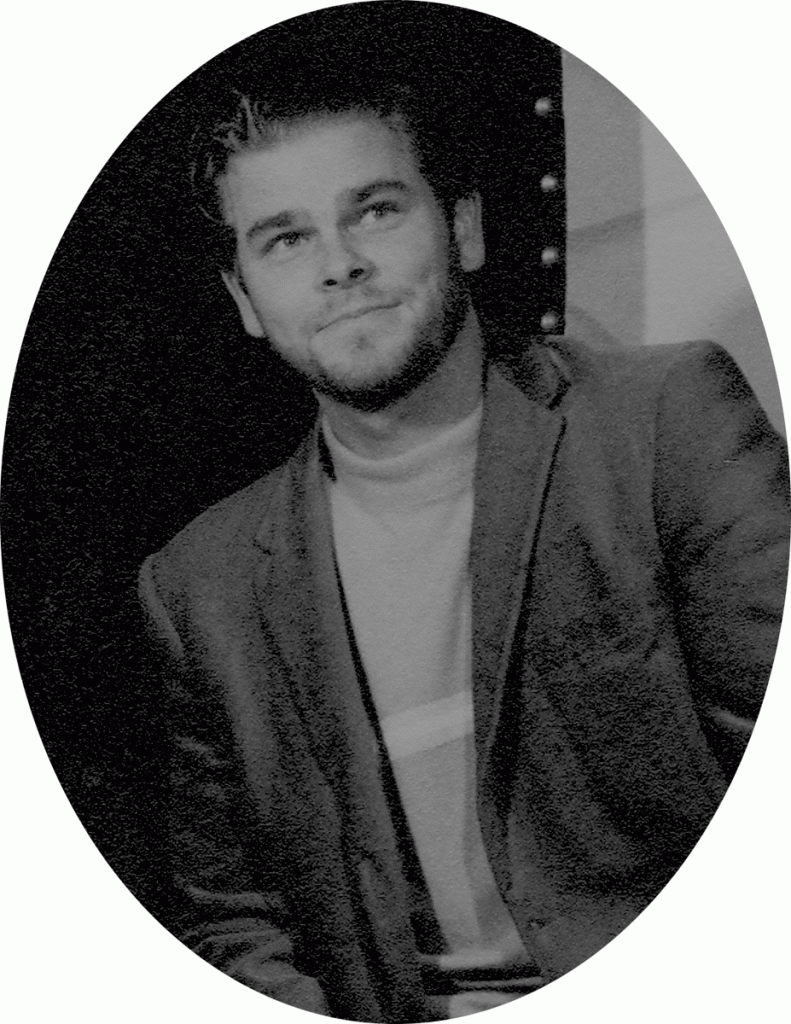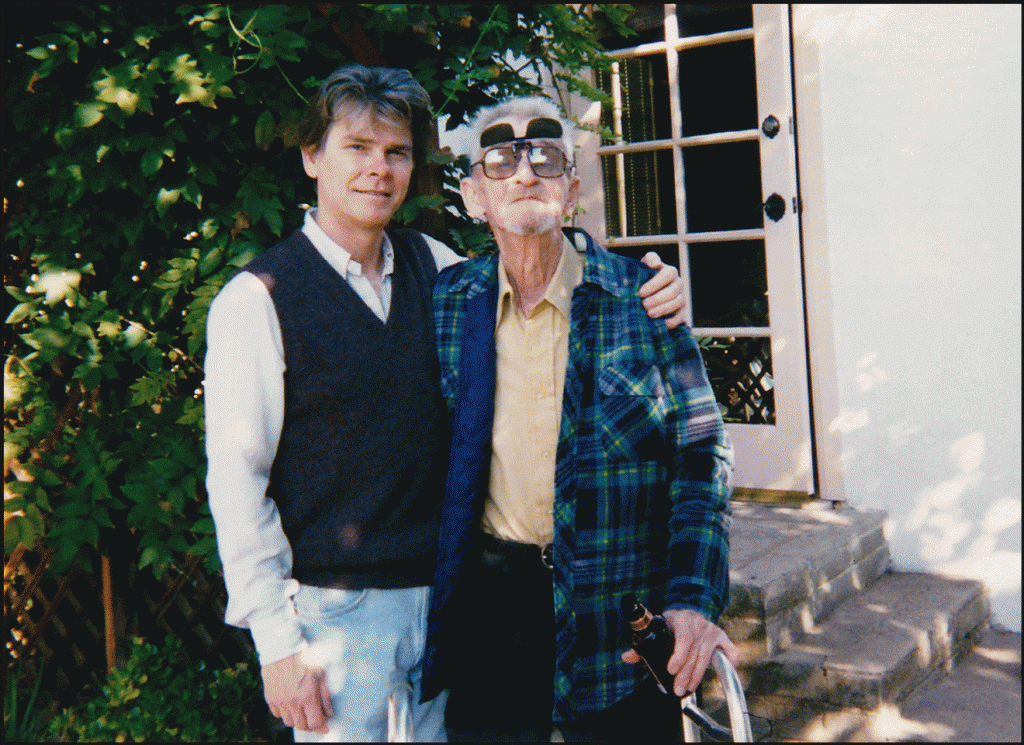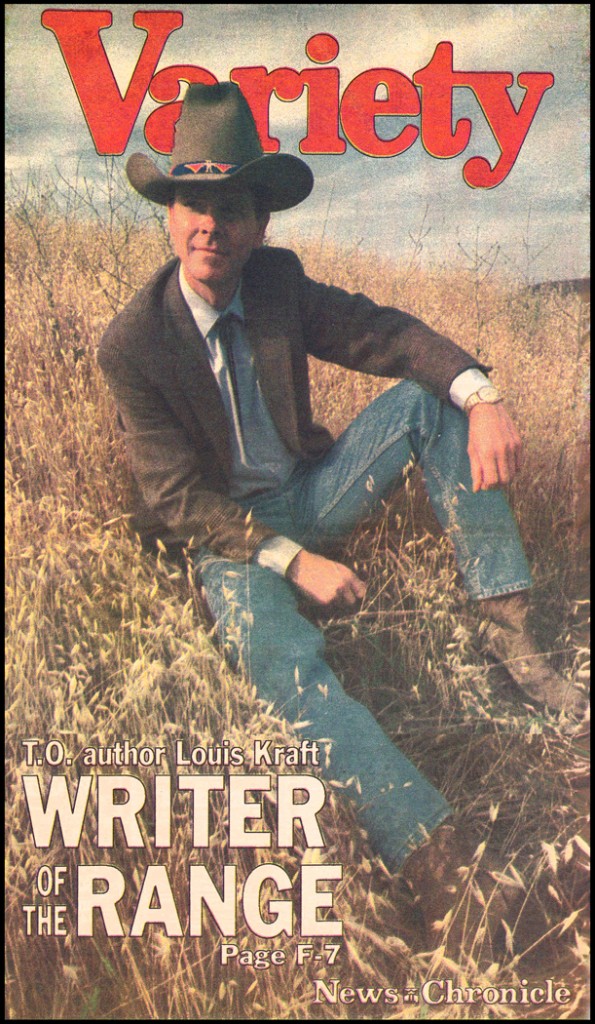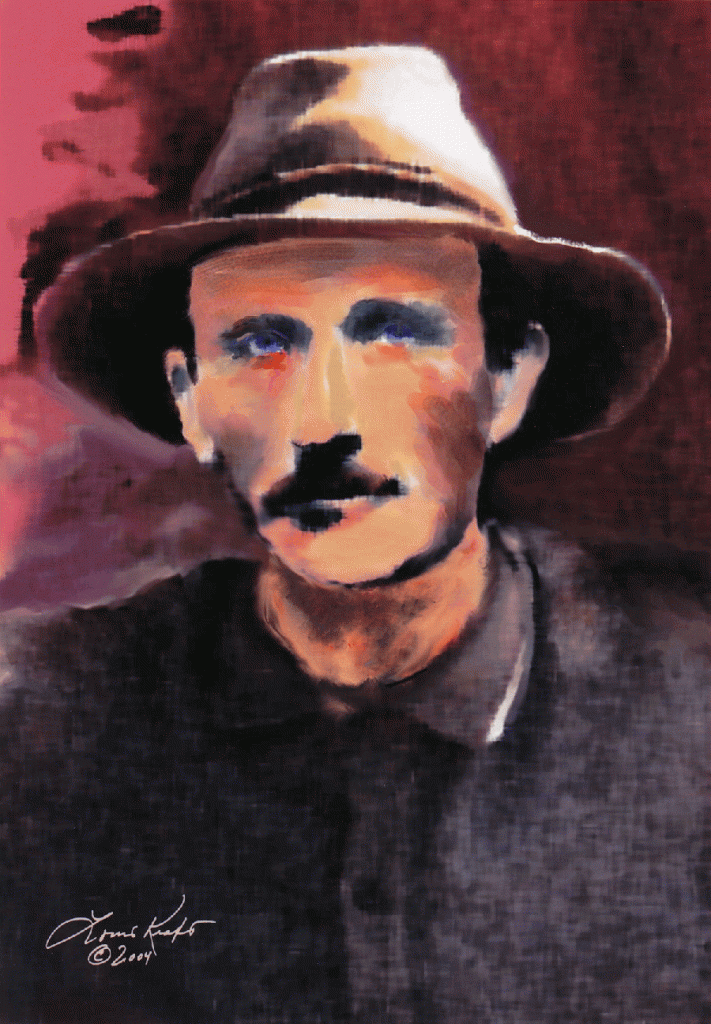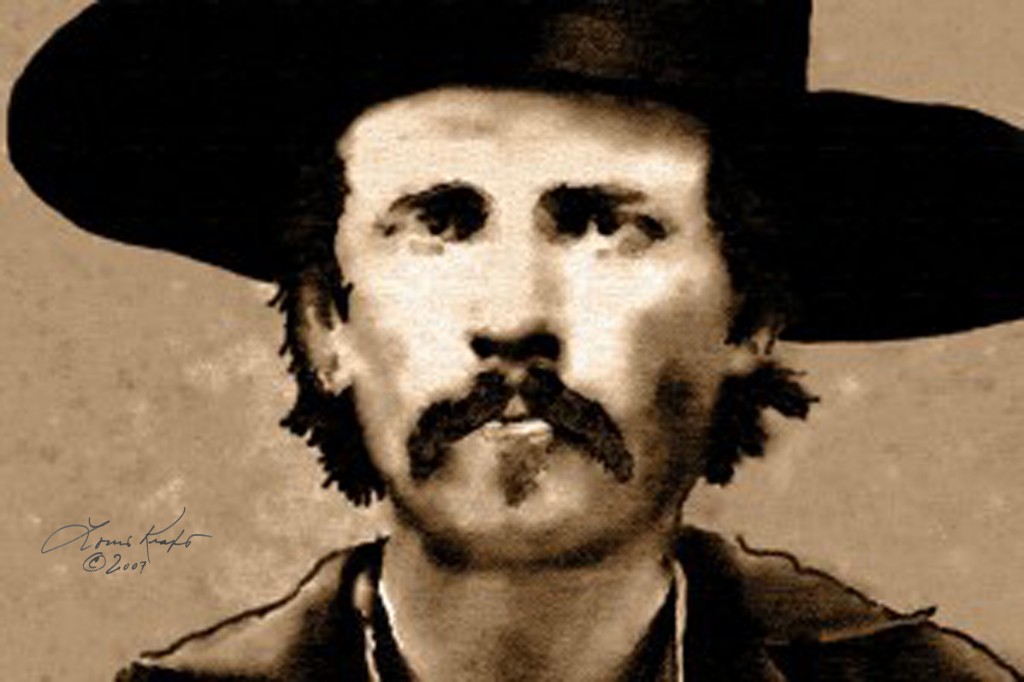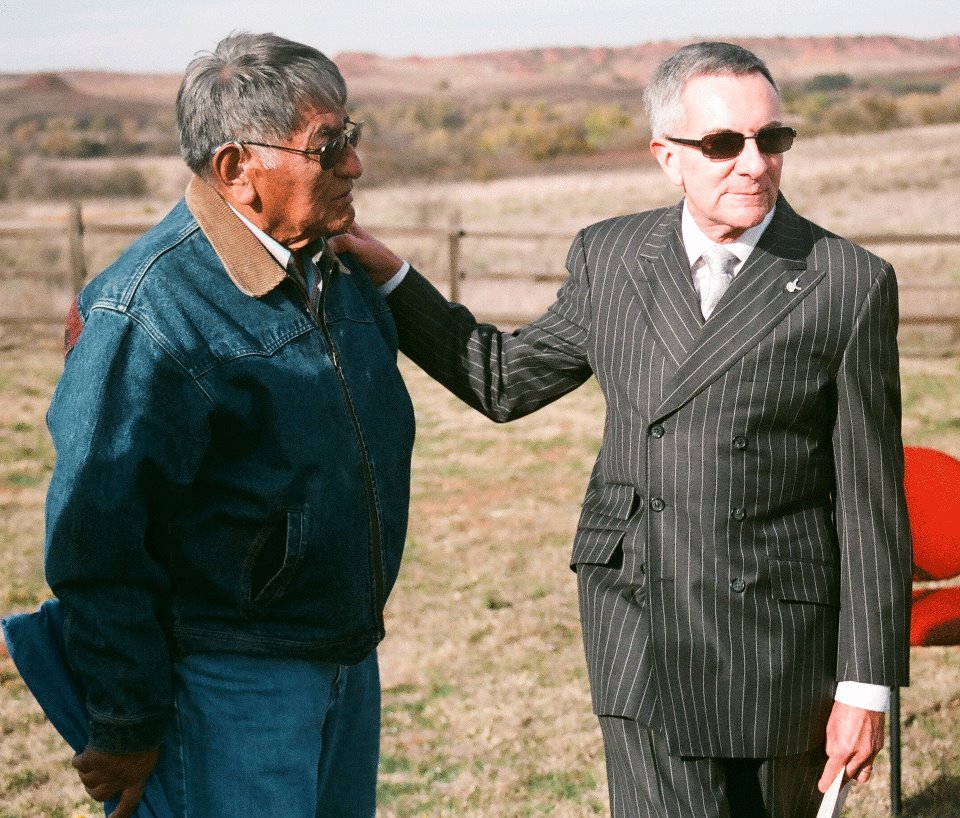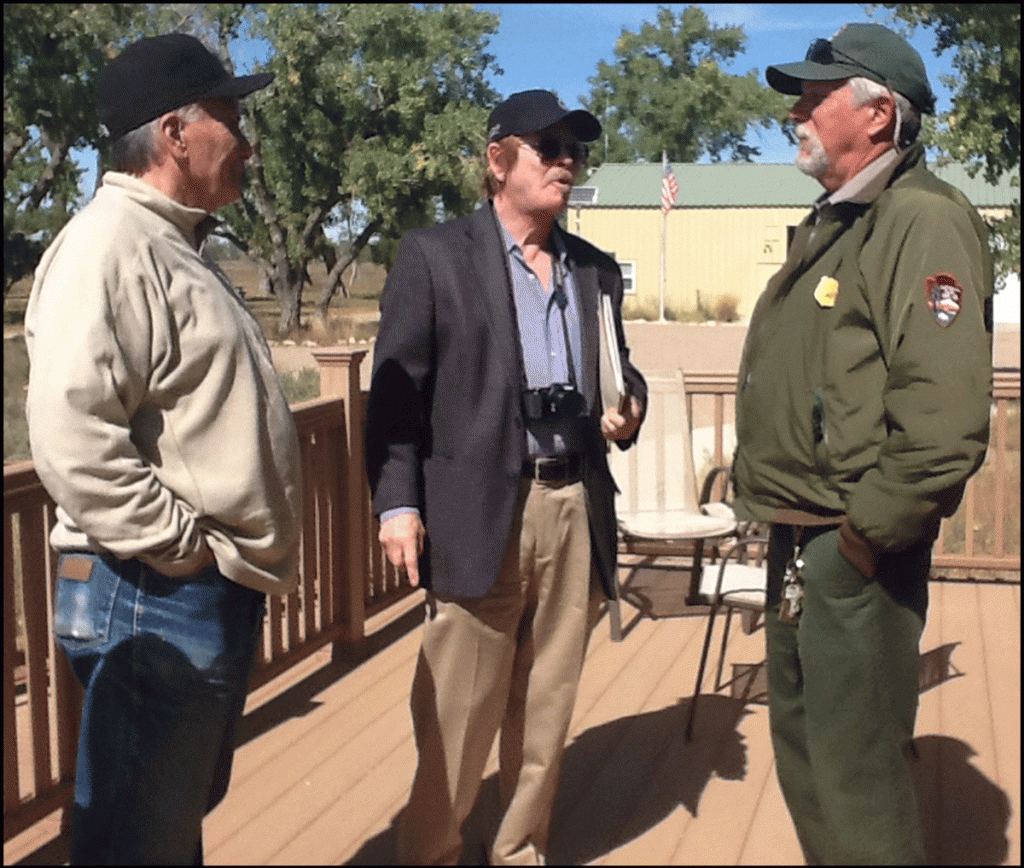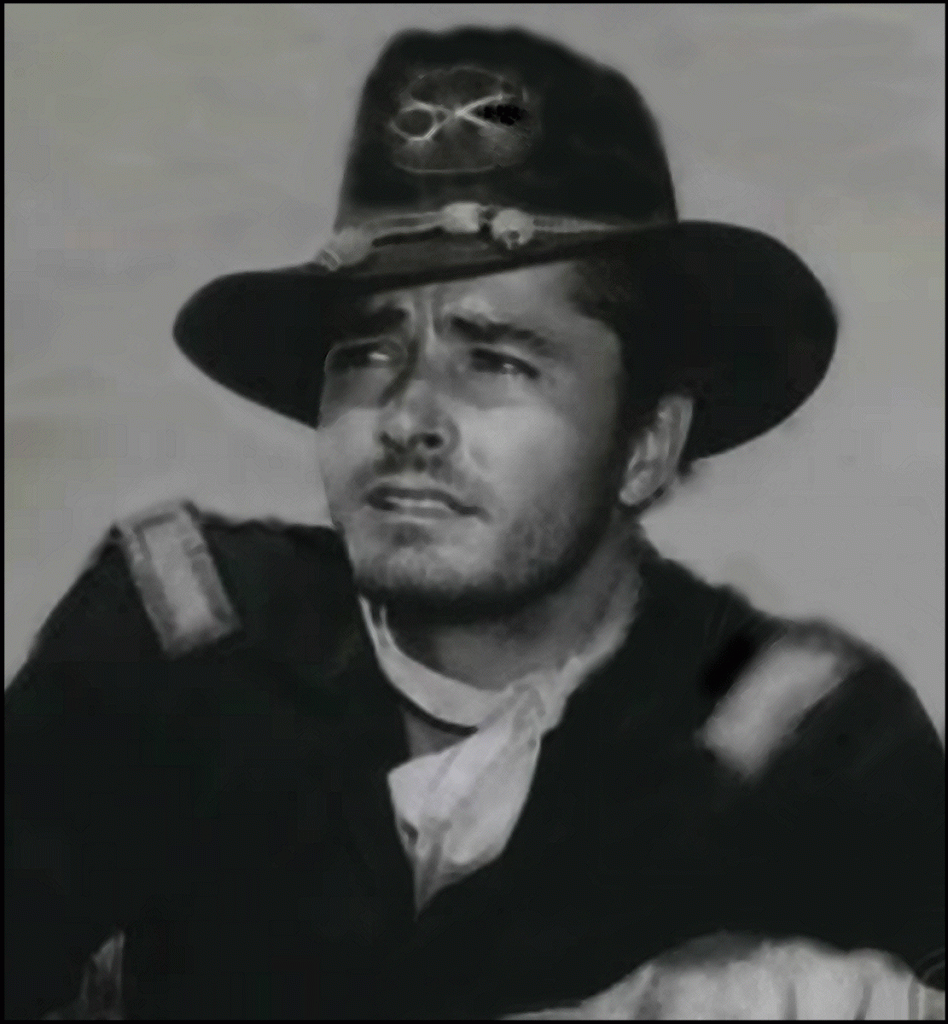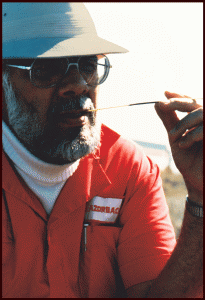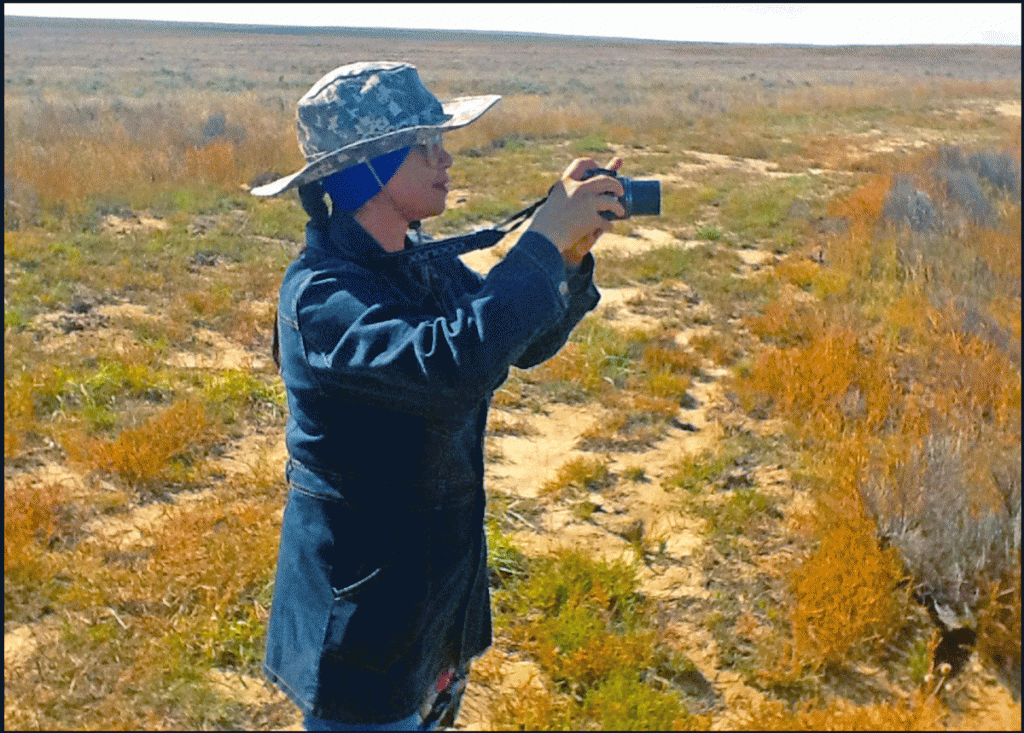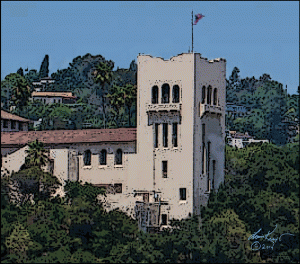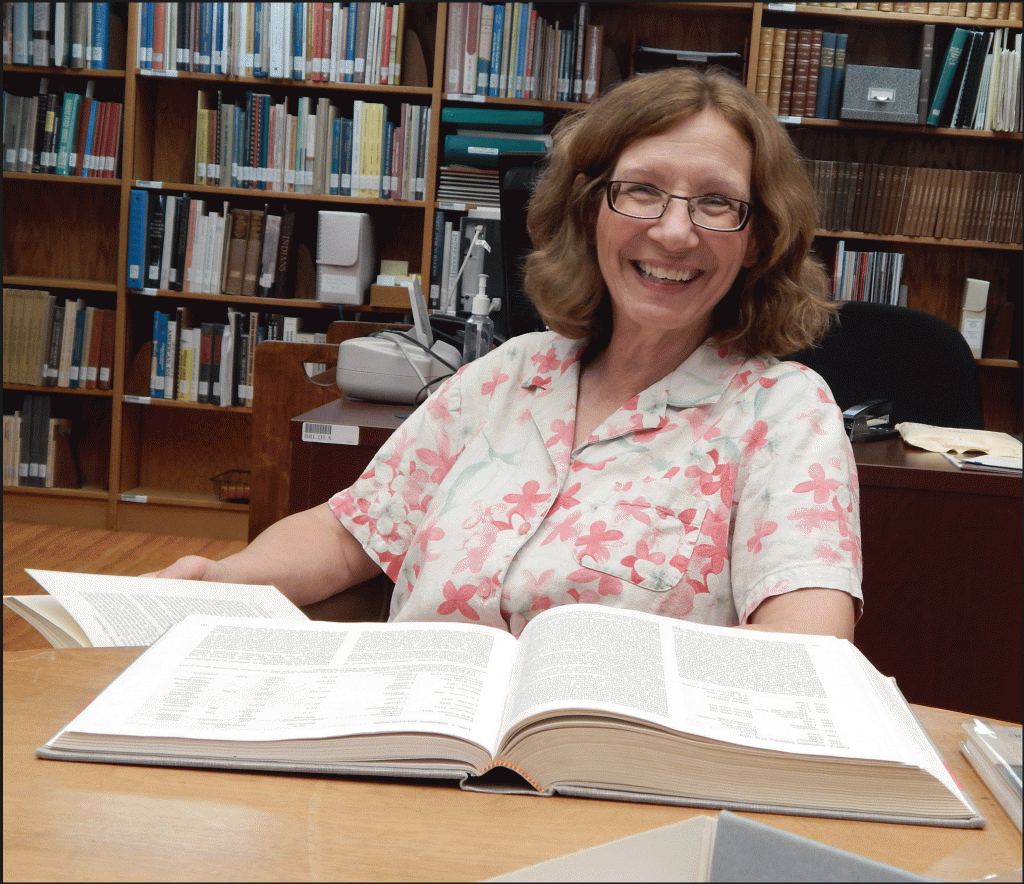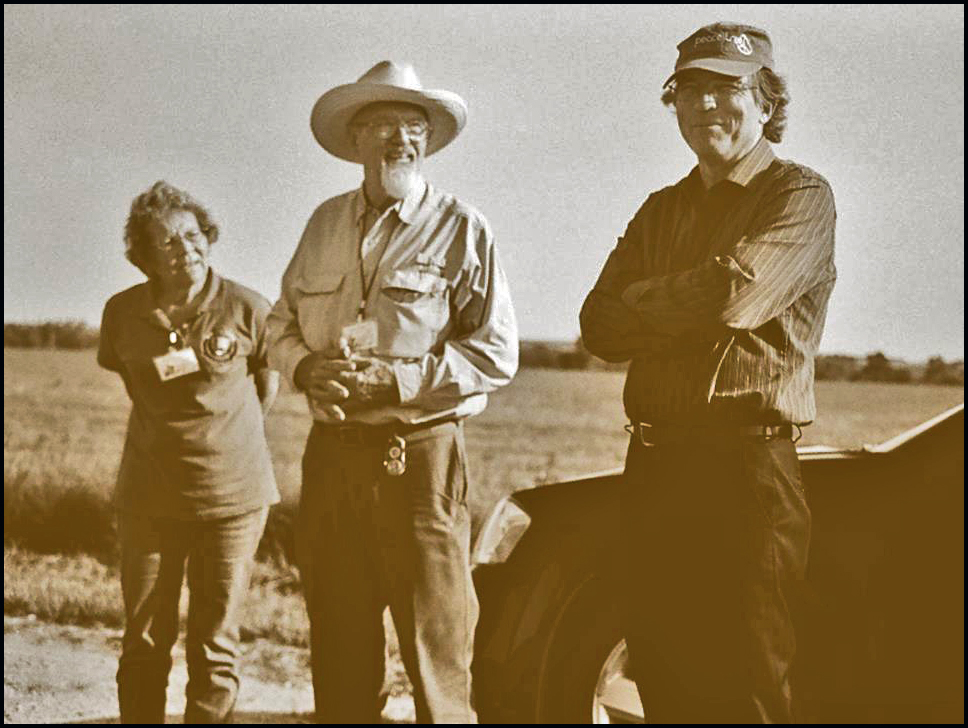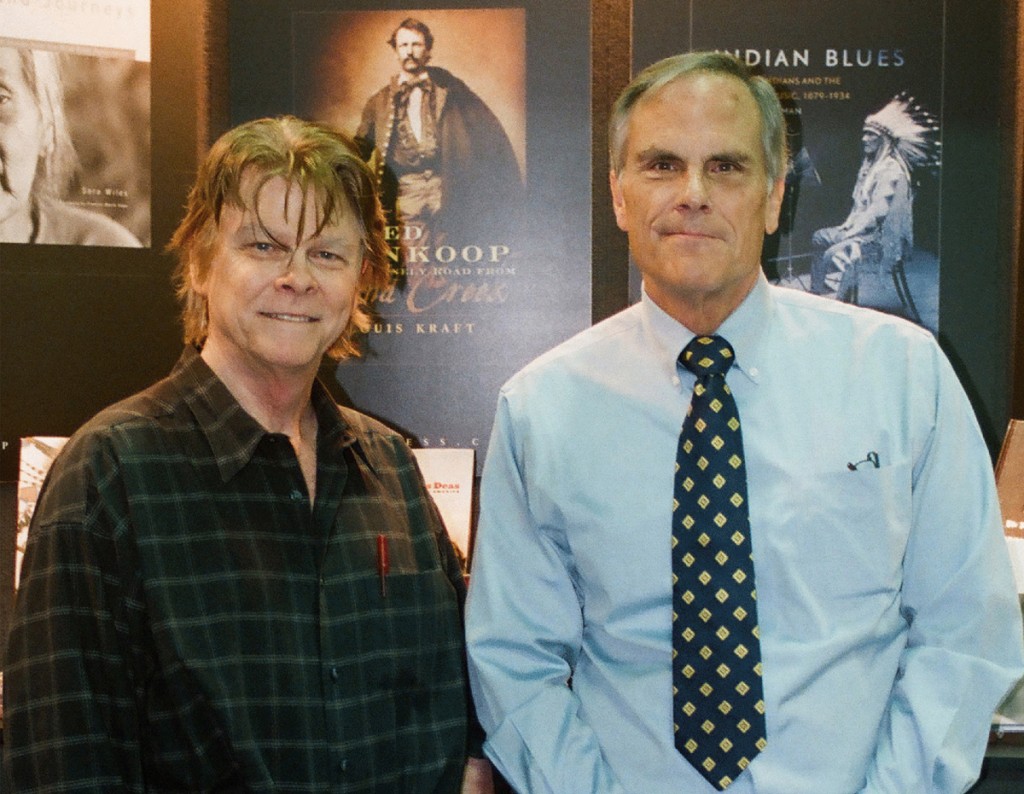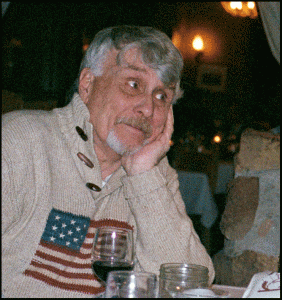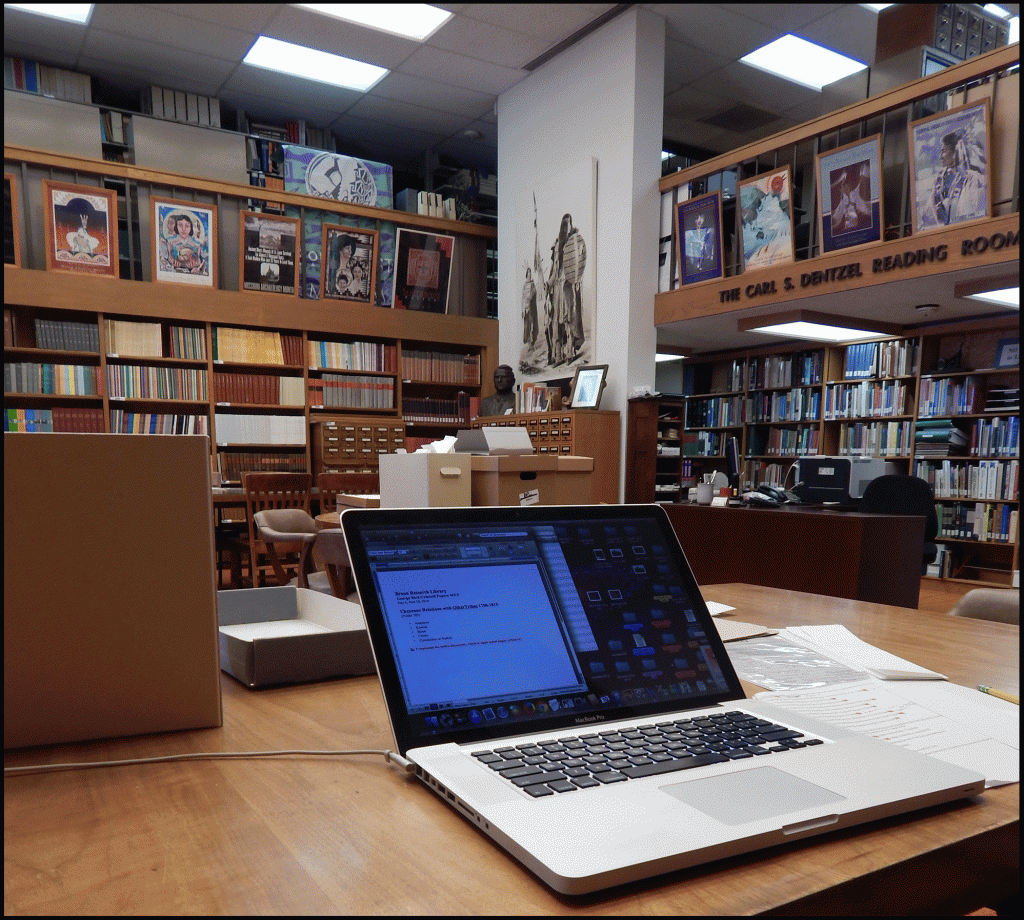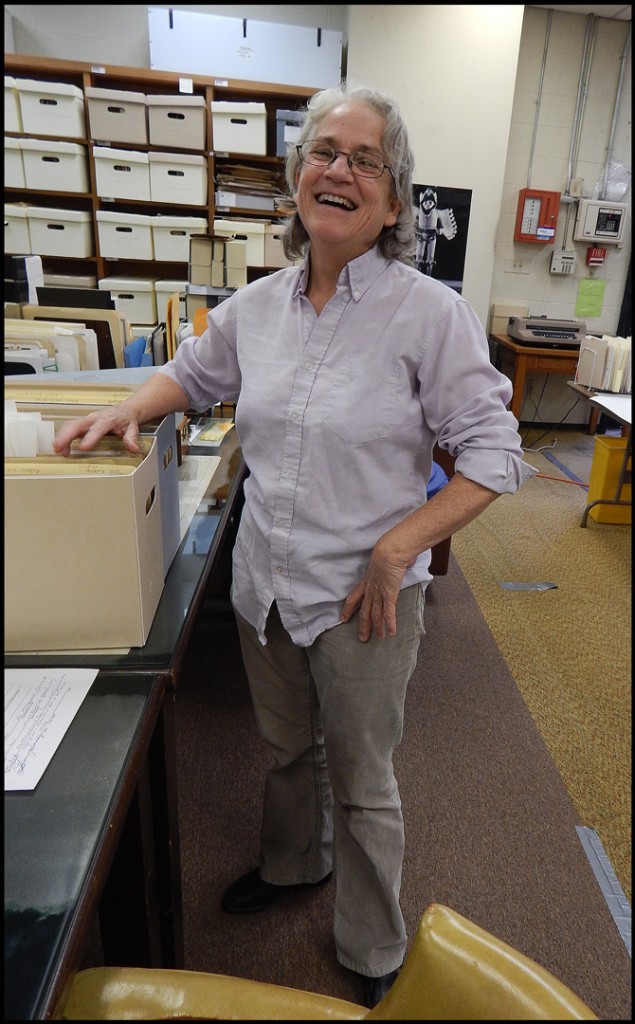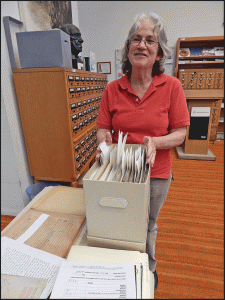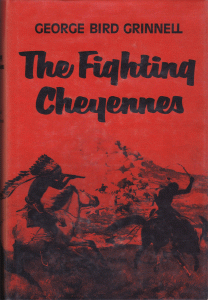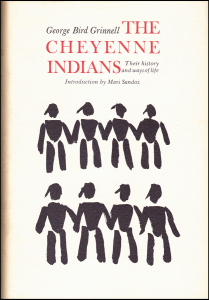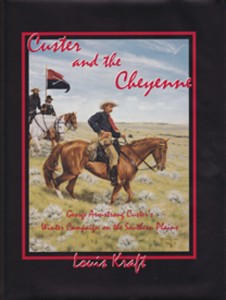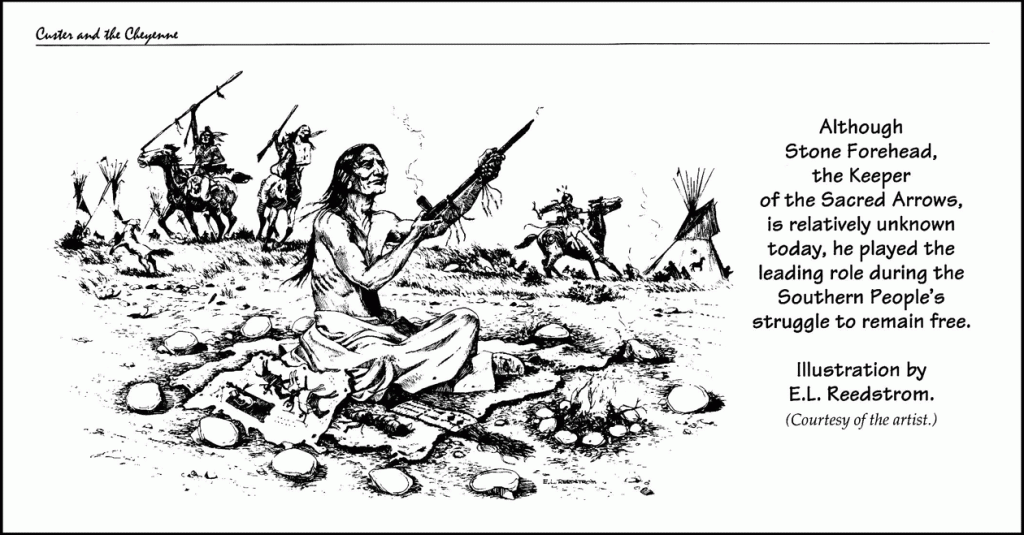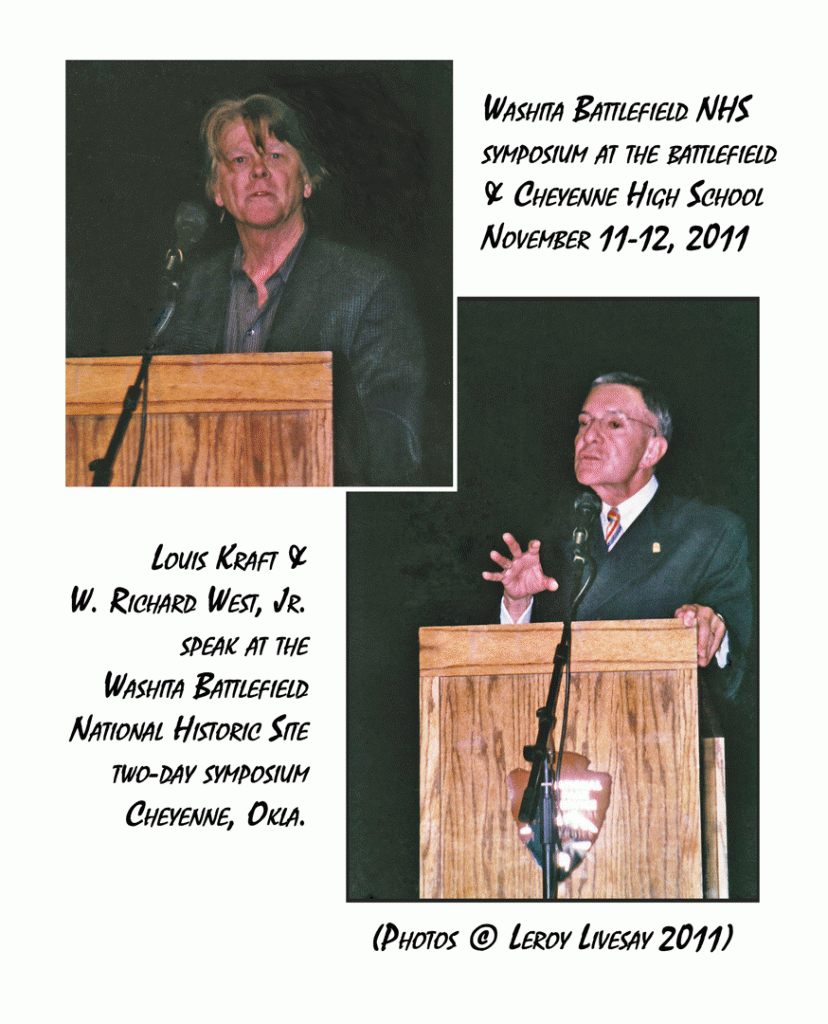Website & blogs © Louis Kraft 2013-2020
Contact Kraft at writerkraft@gmail.com or comment at the end of the blogs
You should know that when I write blogs I’m not writing plays,
articles, talks, or books. When drafting a blog I function as a journalist.
I have points to make. Sometimes I deal with the past but often I deal with
the present. The goal is to present an opinion on events (past and present) while getting my facts straight. When I deal with the past I’m researching an LK memoir or I’m trying to understand historical people from Black Kettle to George Bent to
John Chivington to Olivia de Havilland to Errol Flynn and on and on. When I
deal with the present I’m focused on events that affect my life, and I talk
about them as they are important to me. Regardless if I write about
the past or the present the goal is to inform and entertain you.
The times are boiling …
One of my best friends of all time went under the knife on September 23. A wonderful friend of mine in Thailand has just lost her brother. …
An anticipated call did come on September 23 from a
wonderful lady who is my best friend’s sister.
A language translator totally messed up reality
as to my Thai friend’s brother’s situation
and tragically he died.
Life is precious and I make an effort every day to cherish the time I still have.
As promised in a previous blog I’m keeping my Sand Creek project up front with status updates. Ideally these will be shorter blogs (and not books, as my friend Vee has often reminded me about many of my posts). What follows will mostly deal with the trials and tribulations of LK attempting to make progress on an Indian wars book that dominates his life. All I have to do is complete the manuscript and then work closely with my publisher to ensure that the printed book is as good as we can make it.
You should know that when I draft a document I
have an idea of what I hope to present. When I write fiction
the characters take over and move the plot, but in the blogs
it is the subject matter that controls the flow of the text.
A return to Sand Creek and the Tragic End of a Lifeway
During 12 days in June 2014 I performed intensive primary Cheyenne research at the Braun Research Library at the former Southwest Museum in Los Angeles, California. I had been promised my extensive photocopy request in September 2014. And don’t ignore the word “extensive,” for it was. Read a massive amount of work for Research Services Assistant Manola Madrid, who had worked with me closely on previous visits to the Braun. There would be a delay, but this was not Manola’s fault, and I truly believe that the delay was not caused by the Braun. …
Changes at the Autry National Center, to which the Southwest Museum merged with in 2003, were about to become reality. In July 2014 people that had landed research grants (if that is the correct term) would dominate the Braun staff’s time, and then the reality of the closure of the Braun and ultimately the final closure of the Southwest Museum (which still hasn’t happened as it is still open on Saturdays for people to visit). September 2014 came and went. Actually the rest of 2014 came and went; great times for LK as I was able to take Pailin on her first research trip to the West in the Vette. Almost 4,000 miles in 19 days. She researched Sand Creek in Colorado with my good friend and great Cheyenne wars historian John Monnett and his wife Linda (they kindly welcomed us into their home). In Santa Fe, New Mexico, she got to hang out with my wonderful friend Tomas Jaehn, who is responsible for creating the Louis Kraft Collection at the Chávez History Library, which is part of the New Mexico History Museum (if you saw the historic artifacts that the history museum has hidden away you’d faint). Pailin was again put to work at the Chávez and then locating the last place that Ned Wynkoop lived at in Santa Fe (this last thanks to Tomas’s right-on tips on how to find the building), and again came through with flying colors. We next headed for Texas to see my great friends Glen and Ellen Williams (and Glen’s pretty sister LInda), and like Mr. and Mrs. Monnett, the Williams opened their home to us.
September 2014 came and went. Actually the rest of 2014 came and went; great times for LK as I was able to take Pailin on her first research trip to the West in the Vette. Almost 4,000 miles in 19 days. She researched Sand Creek in Colorado with my good friend and great Cheyenne wars historian John Monnett and his wife Linda (they kindly welcomed us into their home). In Santa Fe, New Mexico, she got to hang out with my wonderful friend Tomas Jaehn, who is responsible for creating the Louis Kraft Collection at the Chávez History Library, which is part of the New Mexico History Museum (if you saw the historic artifacts that the history museum has hidden away you’d faint). Pailin was again put to work at the Chávez and then locating the last place that Ned Wynkoop lived at in Santa Fe (this last thanks to Tomas’s right-on tips on how to find the building), and again came through with flying colors. We next headed for Texas to see my great friends Glen and Ellen Williams (and Glen’s pretty sister LInda), and like Mr. and Mrs. Monnett, the Williams opened their home to us.
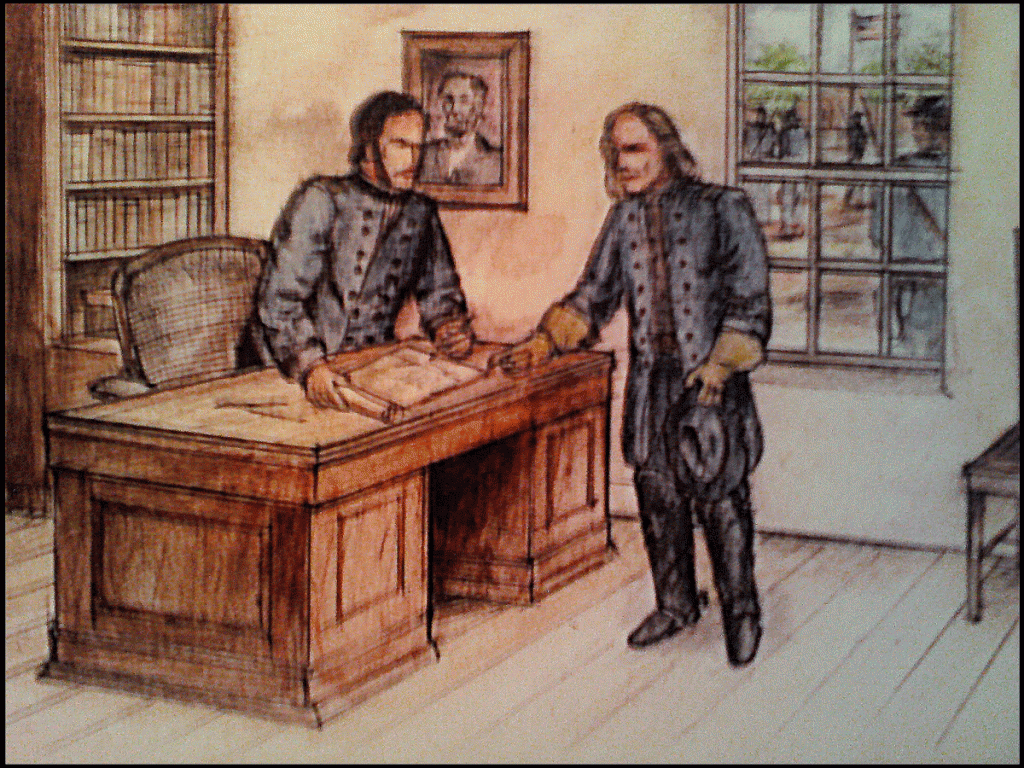
This is a detail of a painting that is one of many placards at the Bosque Redondo Memorial at Fort Sumner in southeast New Mexico (unfortunately I don’t know the name of the person that created the art). Here Col. Christopher “Kit” Carson (right) is agreeing to command Gen. James Carleton’s (left) Mescalero Apache campaign in 1863. The Mescaleros would be removed to the Bosque Redondo before Carson’s burnt earth campaign against the Navajos began later that year. BTW, the Bosque Redondo Memorial is magnificent. If you have any interest in the Apaches or the Navajos’ forced confinement in a deadly environment a visit to the memorial is well worth your time. If you are a Mescalero Apache or Navajo cultural or Indian wars historian-writer it is mandatory that you visit. … BTW, Kit Carson was not the racist-butcher that so many uninformed people stuff down our throats. For starters he had an Arapaho wife, a Cheyenne wife, and a Spanish wife. He also spoke six or seven languages: English, Arapaho, Cheyenne, Spanish, Ute, Mescalero Apache dialect, and I believe Navajo. Not bad for a person who is now often slandered and libeled as a butcher and racist by people with their thumbs stuck where the sun doesn’t shine.
On the way to Texas we visited the Bosque Redondo in southeast New Mexico where the Navajos were incarcerated after the “Long Walk” in 1864 when they surrendered to Kit Carson’s burnt earth campaign that had few fatal casualties (I believe under 30 deaths). This area now thrives but in the 1860s it was a land of pestilence and death. This was must see for my next nonfiction Indian wars book will feature Carson’s relationship with Indians (but most likely not the Navajo campaign or its aftermath).
Yeah, I’m up to my usual evasion tricks. Sorry.
Back to my line of thought. January 2015 arrived and I still didn’t have any of my Cheyenne research that I had been promised in September 2014. If you know me well you know that in the past (actually my dark past) I had a short fuse. Time has mellowed me, but at the beginning of this year I needed to calm the rest of me down (not a small task).
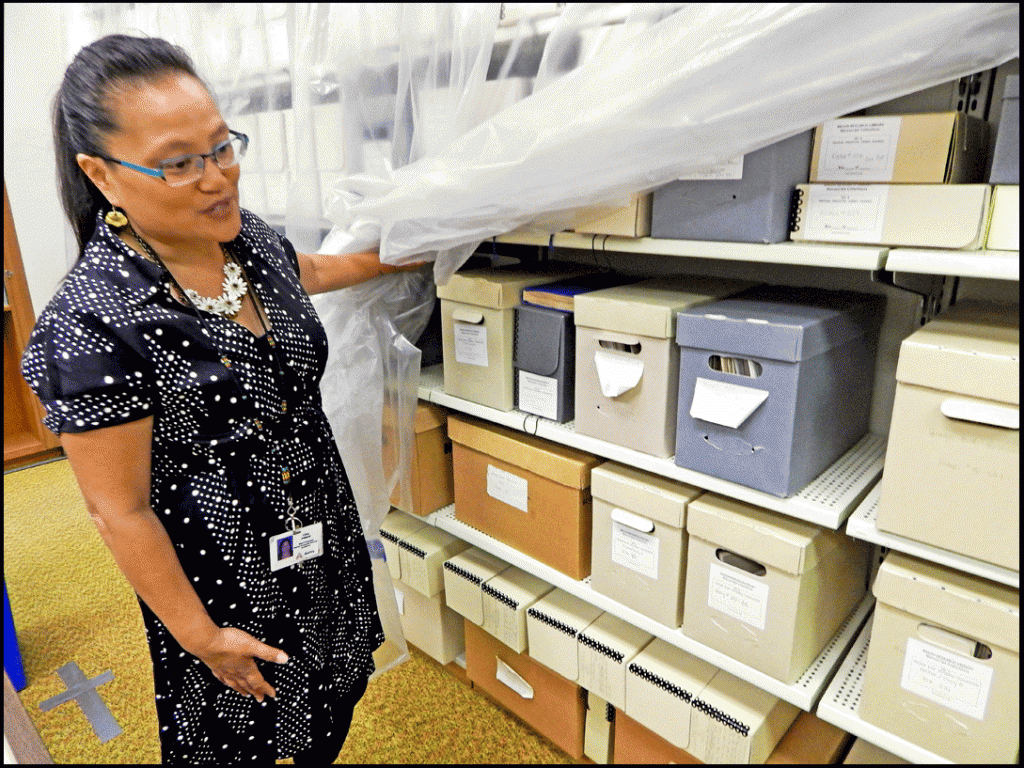
Liza Posas, who is archivist and head librarian of the Braun Research Library, played a major role in my 2014 research time within the George Bird Grinnell Papers held by the Southwest Museum. She is professional, open, helpful, and kind. I have enjoyed every moment working with her, and look forward to when we again work together. In this image of her on 20jun2014 she is showing me the scope of the George Bird Grinnell Collection. (photo © Louis Kraft & Liza Posas 2014)
On August 6, 2015 (13½ months after I made the request), I picked up photocopies for what amounted to a little over a third of my order at the Autry National Center (a short surface-street drive as opposed to a three-freeway potential nightmare). Email communication at that time stated that the rest of my research had been digitized. I was quoted a page cost for the digital pages and told that I would hear more in a week. The week passed. Actually over a month passed. Believe it or not I have deadlines, but worse it takes me at least five times as long to write a page of nonfiction than it does a page of fiction (to be honest, I believe that this is an understatement for I’m thrilled when I get a full page of Sand Creek text written in a day (granted that day may only be five or eight hours, but heck sometimes I can crank out two or three pages of fiction in an hour). Remember that none of this writing is polished for I’m only talking about rough drafts. That said, nonfiction polishing easily takes a lot longer than fiction polishing as I’m again concentrating on facts and dates and making sure that a polish doesn’t turn the nonfiction into fiction.
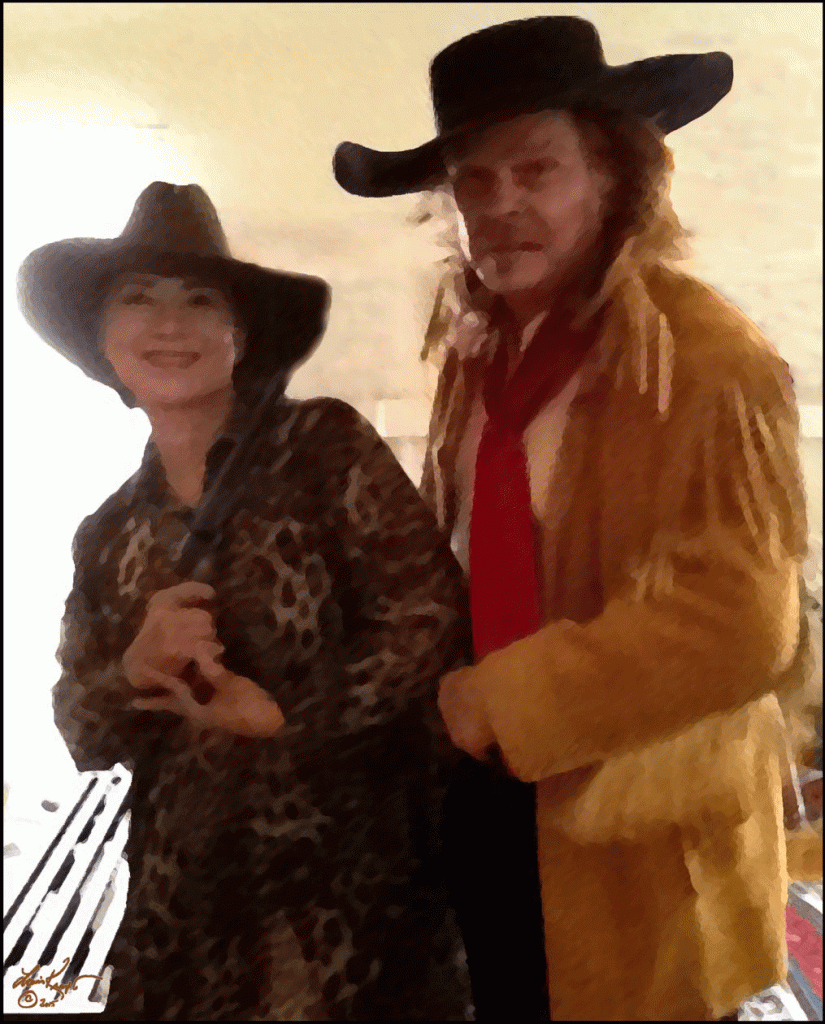
This image of Pailin and LK is now from a time long gone (although the art is based upon a photo taken a handful of days ago). I’m playing with it and trying to use it to figure out how I’ll create a piece of art that is required. It is an ongoing search for me to figure out what I need to do to create artwork in the very near future (and believe me it has nothing to do with gunfighters or frontiersmen). I’m a firm believer in doing plenty of research before a word is written, or in this case playing with color, line, and technique before doing anything (other than researching the subject) before attempting to create art for a book cover. (art © Louis Kraft 2015)
The Sand Creek manuscript deals with five types of people: Whites that saw an opportunity in a new land (Colorado Territory) and did what they could to secure the land and their fortunes at the cost of the American Indians that claimed the land as theirs; the Cheyennes and Arapahos who called this land theirs; the whites that married into the tribes; the mixed-bloods that walked between two races; and the whites that dared to speak out against the butchery of Cheyennes and Arapahos who thought that they were under the protection of the U.S. military. … Add females whenever I have enough information to bring them to life. … Oh, I should add that racism was rampant in the 1860s.
Sand Creek and the Tragic End of a Lifeway is not an easy manuscript to write. The research is massive, and worse I have to bring the leading and major supporting players to life with a minimal amount of primary information. And just as important I need to make the text flow seamlessly between the various people groups and their actions, while at the same time attempting to keep all the players’ points of view (POV) in focus. The goal is to have the reader make their decision on all the players’ actions.
Doable? You bet! Can I do it? I don’t know, but I hope that I can.
For the story to work the people must be real. They must live and breathe and have objectives as they react to their life and times.
Back to the immediate present
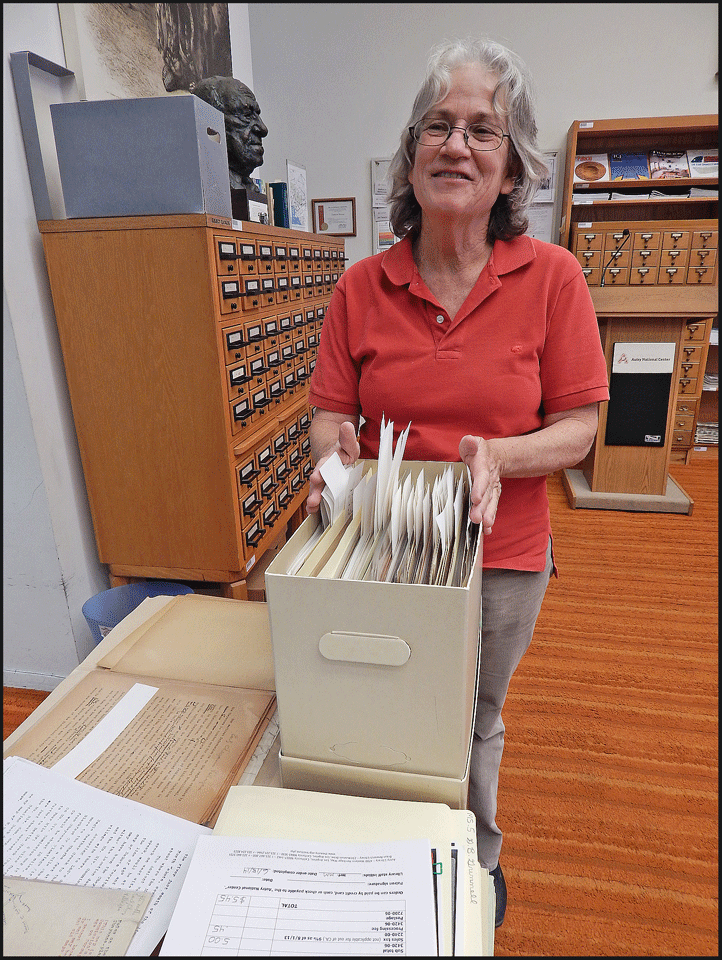
Manola Madrid working on the first floor of the Braun Research Library for LK in June 2014. She’s a hard worker, very knowledgeable on the subject matter, and most important an absolute delight to know and call friend. For what it is worth, Manola and I can talk about anything. That’s a real nice feeling, and worth keeping. With all the massive changes that the Southwest and the Autry are undergoing she has chosen to walk away and retire in mid-October 2015. I’m thrilled for her, … my lone hope is that our relationship can continue and that someday I’ll meet her husband and that she’ll meet Pailin. (photo © Louis Kraft & Manola Madrid 2014)
In mid-September my fear threshold began to reach its eruption peak. The Sand Creek manuscript is due at OU Press on October 1, 2016. Hell, I’m light years away from completing a rough first draft, a first draft that I’m still collecting primary source material to complete (again, I did my research at the Braun in June 2014).
LK is thrilled (and angry) but thrilled is the bottom word. I’m writing a book about the end of the Southern Cheyenne lifeway. This primary research; useable or not is mandatory by me. There was so much to see in just one archive that there was no way I could get through all of it in 12 days. Thus my costly research request, which—and to repeat myself—was due in September 2014. September 17, 2015, arrived and I again complained. I was told that my complaint was confusing. Confusing? Well maybe, but I wasn’t obscure. More important my complaint garnered results for on September 21 I picked up a CD with the remainder of my research request of June 2014.
This was a joyous occasion for I got to spend two hours with Manola Madrid, a long-time research service assistant at the Braun Research Library at the former Southwest Museum in Los Angeles.
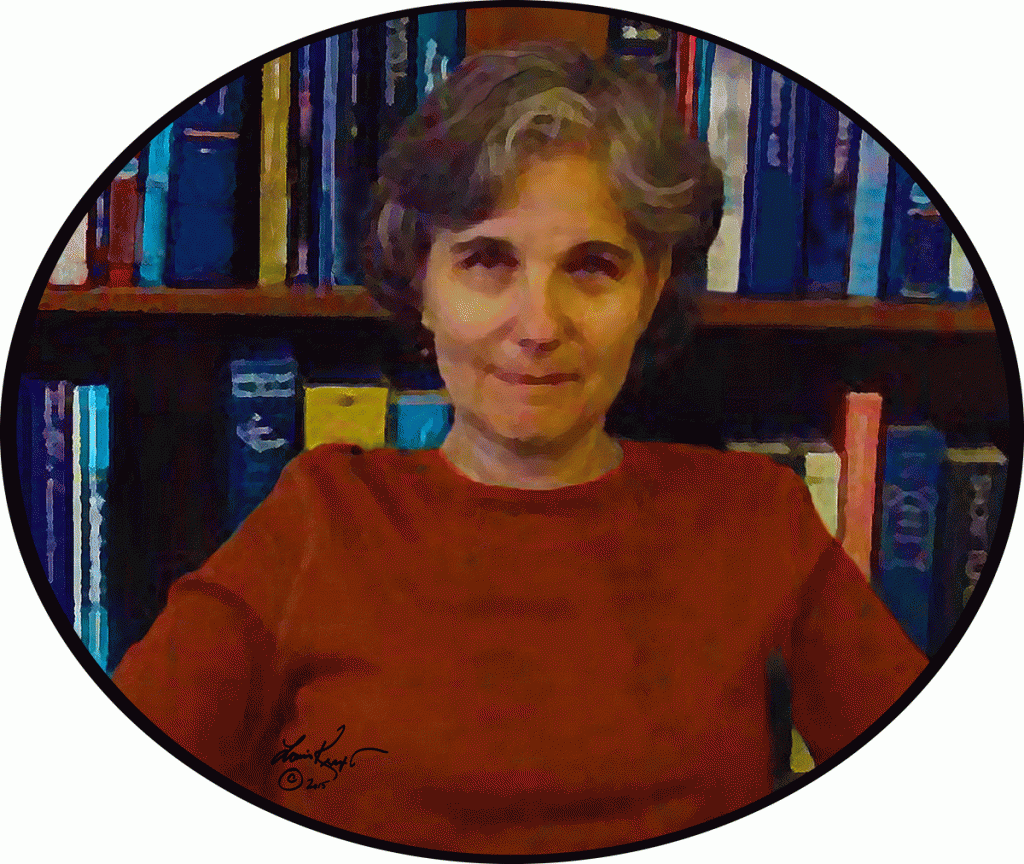
Marva Felchin, director of libraries and archives at the Autry National Center. (art © Louis Kraft 2015)
I also spent prime time with Marva Felchin, director of libraries and archives at the Autry National Center. I met Marva while researching obscure and yet mandatory primary source material for Ned Wynkoop and the Lonely Road from Sand Creek. She would attend an Errol Flynn talk locally in Burbank, Calif., soon after (I think in 2008). On September 21 I delivered a promised Geronimo magazine article, as well as two Ned Wynkoop articles that I knew that the Autry didn’t have to Marva for the Autry Resources Center (ARC). I believe that the ARC, a 105,000 square-foot research center that will house the former Southwest Museum archive and research material (over 500,000 artworks and artifacts + archival material) and the Autry’s library and archive (not sure how large this is). Although the private opening might be in late 2016 most likely the public opening won’t happen until 2017. On this day Marva told me that if needed I could perform research before the ARC opens.
That was very kind of Marva. I don’t think I’ll need to do any research before the opening, but it is good to know that the door will be open to me if I need to do additional research. This is a good feeling. Thank you, Marva (unfortunately I have no images of Marva to share).
Autry National Center is magnificent … almost
The Autry National Center is magnificent, but it doesn’t compare to similar facilities, such as National Cowboy and Western Heritage Museum in Oklahoma City. Not too many years back when the Autry decided to merge with the Southwest Museum, this action opened the door to major respectability. Do not under estimate this, for the Southwest’s holdings are a major coup for the Autry.
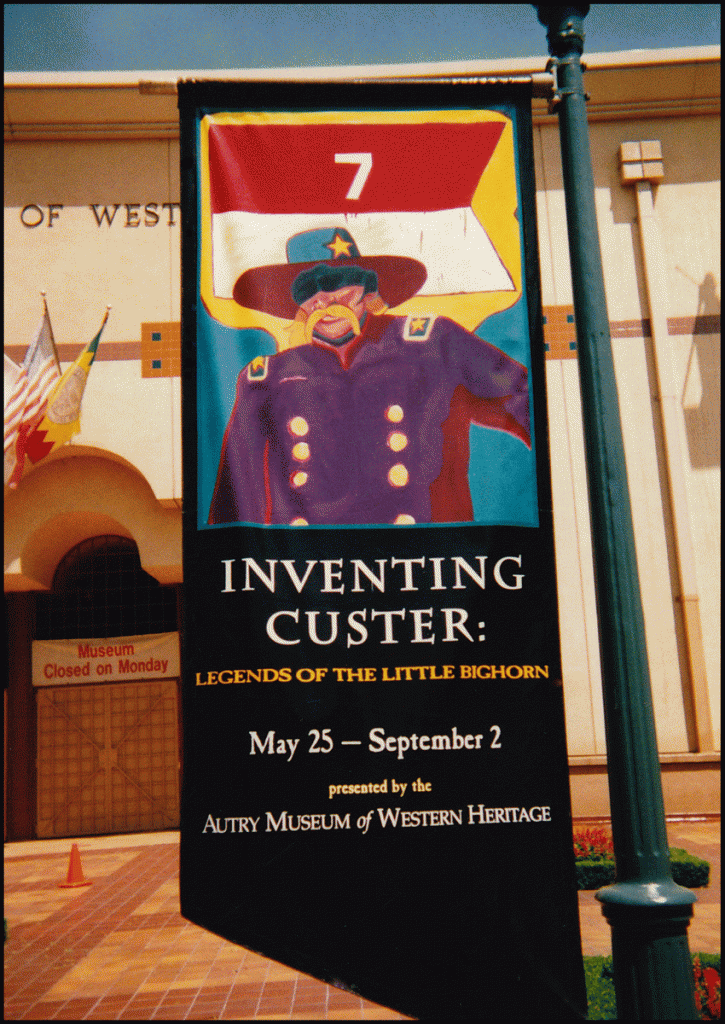
Over the years the Autry National Center has had many names (Why? I have no clue why, but can guess that the rich and famous continued to spout their view and progressively have worked to remove not only the westering experience from the museum’s name but also—God forbid—have tried to push the legendary Gene Autry, who is responsible for the museum, into the dark shadows of a long-gone time). I’m not a fan of Gene’s one-hour B-westerns, his 1950s TV show, or his singing. That said, he was a major influence on his world and if it wasn’t for him there would be no Autry National Center. The “Inventing Custer: Legends of the Little Bighorn” exhibit was brilliant and was by far the best exhibit that I have ever seen at the Autry (or elsewhere). It ranged from Custer and his times (artifacts, including his hair, which his wife Libbie had clipped prior to an expedition on the Plains and BTW he was a strawberry blond and nowhere close to being “Yellow Hair,” to photos, to Custer in afterlife, which included film, toys, and memorabilia). As already stated I have never been a fan of Mr. Autry, but more recently (22Jun2007 through 13Jan2008) the Autry presented a marvelous exhibit that focused exclusively on “the Singing Cowboy’s” life and times (“Gene Autry and the Twentieth-Century West: The Centennial Exhibition, 1907-2007”). Unfortunately I have inside information that confirms that many of the elite members of the Autry were unhappy with the exhibit and refused to support it. SHAME ON THEM! This was by far the second best exhibit I have ever seen at the Autry, and in the future it should be repeated! Unfortunately “Inventing Custer” was pieced together with artifacts, photos, toys, books, and film memorabilia from multiple archives and private collections (and would be almost impossible to bring back for an encore). (photo of “Inventing Custer” banner © Louis Kraft 1996)
Still you need to realize that people who light their cigarettes with $1,000 dollar bills, shall I call them the “major” Autry donors, bitched. As far as they were concerned money counts, such as their designer clothes, their $10,000 necklaces, the glitter of the Autry … I used to attend 2nd (or was it 3rd) tier openings at the Autry. Those days are history. You want to attend an opening, fork up $1,700 or perhaps $1,800. I wouldn’t call these openings ones that the general public can attend. What can I say? You get the picture, other than these elite people don’t give a bleep that the Southwest goldmine is now part of the Autry. … American Indian culture and artifacts mean little to them. “Why are we wasting our money on an institution that was dying?” (this is a quote based upon words that I recently heard but wasn’t able to jot down exactly for prosperity). Lucky them! Bottom line, they don’t give a bleep about the wondrous treasure that the Southwest (and its now dead and gone Braun Research Library) once was.
You want to know the truth? The Southwest Museum (which includes the Braun) was special. The Autry has always reeked of money, and the facility has always been gorgeous. Unfortunately when compared to other institutions of a similar type it can’t compare. Now it can, for regardless of rich bitching it now controls the massive collection of American Indian artifacts and research that the Southwest once owned. Ladies and gentlemen I have been off and on (at the moment off) a proud member of the Autry. To quote one of only three TV series that I have liked (The X-Files), “The truth is out there.” And it is for the Autry National Center.
The Autry National Center is poised to claim its position as one of the great western history and cultural museums in the United States. I certainly believe that the person leading the way, President and CEO W. Richard (Rick) West, Jr., will ensure that this happens.
Some views; wanted or not …
Los Angeles is currently divided between the extremely rich and everyone else, who struggle to pay bills.* The middle class? What’s that? Actually it is a name that represents a dead and departed race of people that has ceased to exist and that is the middle class. Worse, and I’m not talking about racism; rather I’m talking about the future that has, alas, arrived. Specifically to the Autry’s major donors, the extraordinary and exceptional artifacts housed at the Southwest don’t count. What is at risk here is the American western experience, which includes the Plains Indians, Southwest Indians, Pacific Coast Indians, Alaskan Indians, and the massive conquest of their homelands and destruction of their cultures.
* This statement is simplistic at best. What isn’t simplistic or overstated is that the city of Los Angeles (North Hollywood is a town in LA) is quickly becoming a modern-day Tombstone, Arizona. Los Angeles had a confirmed murder count of 39 in August (LA Times, “Deadliest August in Los Angeles in 8 years,” 4Sept2015). This past weekend (September 26-27) 19 people were shot and five died (LA Times, “19 Shootings, A Call for Help: LAPD appeals to community after new bloodshed,” 30sept2015). Although I have had guns pointed at me I have yet to witness shootings in North Hollywood. That said, I no longer walk at night for violence often stalks the streets of NoHo.
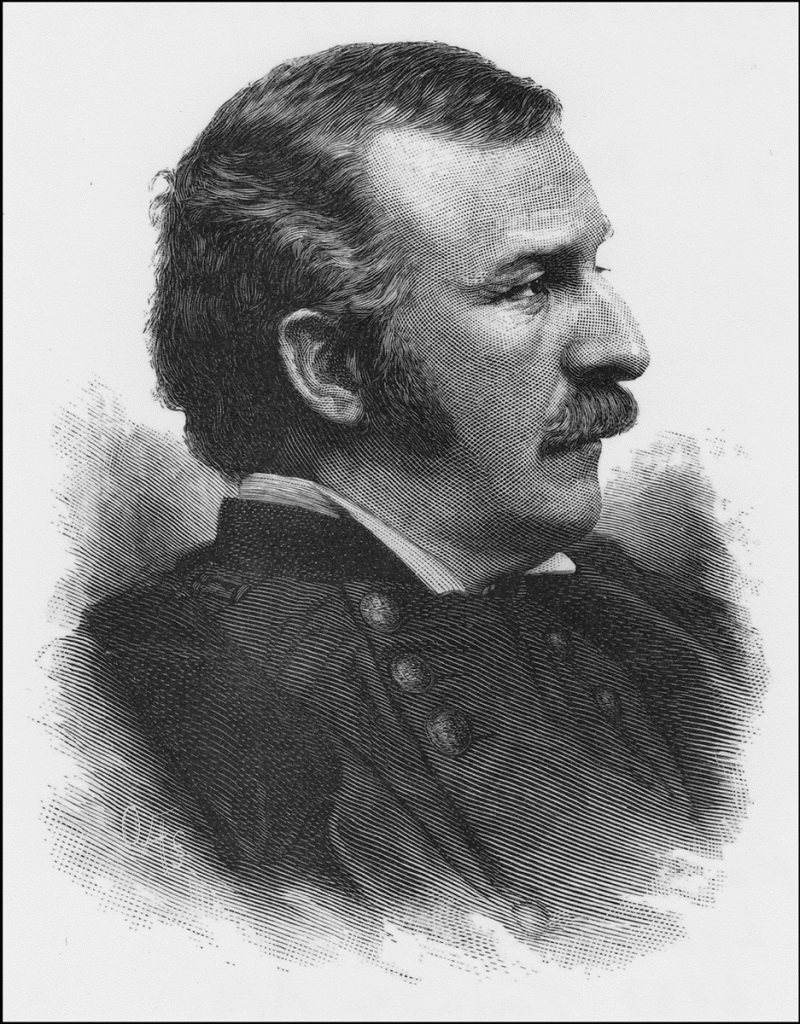
I don’t have an image of Kevin Tighe as Miles (damn!!!). Tighe, along with Wes Studi (who was at least 30 years too young to play Geronimo) were the two outstanding performances in Geronimo: An American Legend. I don’t know either man but shortly after the release of Dances with Wolves (1990) I spent good time with Studi in an American Indian shop in Tarzana, Calif. Unfortunately the shop is long gone and I never met Studi again. My guess, both men did their homework, … something Bob Duvall (who I worked closely with for about four months in the 1980s) didn’t do. This image of Miles is in the LK personal collection and was published first in 1886. It has since been published in Lt. Charles Gatewood & His Apache Wars Memoir (2005) and in “Geronimo’s Gunfighter Attitude” (Wild West, October 2015).
This is America and it must not be forgotten! American Indian lifeways count, and so do the racial interactions between invading whites and the people that initially welcomed their presence. During this time very few whites accepted American Indians as human beings, and those that dared to are American heroes; not those that stole, incarcerated, and if need be butchered people that they felt were below them on the evolution scale. … If I am even close in my opinion I am predicting a “Pandora’s Box” that when it is opened will initiate the end of America’s heritage. As Kevin Tighe, who played General Nelson Miles, says to Matt Damon’s Lieutenant Britton Davis (who BTW had resigned his military commission in 1885 and lived in Mexico at the time of Geronimo’s and Naiche’s surrender in September 1886) near the end of Geronimo: An American Legend (Columbia Pictures, 1993): “Lieutenant, you’re more worried about keeping your word to a savage than to fulfilling your duties to the citizens of this country. We won and that’s what counts. It’s over with Geronimo, the Apache, and the whole history of the West, except for being a farmer.”
You want my opinion? Honestly, you don’t want to hear my opinion for much of it isn’t printable.
I’ve been cramming on the digital files from the September 2015 Braun delivery since I’ve received the CD from Manola. I’m looking at the files to ensure that they are readable. I’m also spot reading and searching for primary information that might be included in the Sand Creek manuscript. Let me tell you that this is slow going.
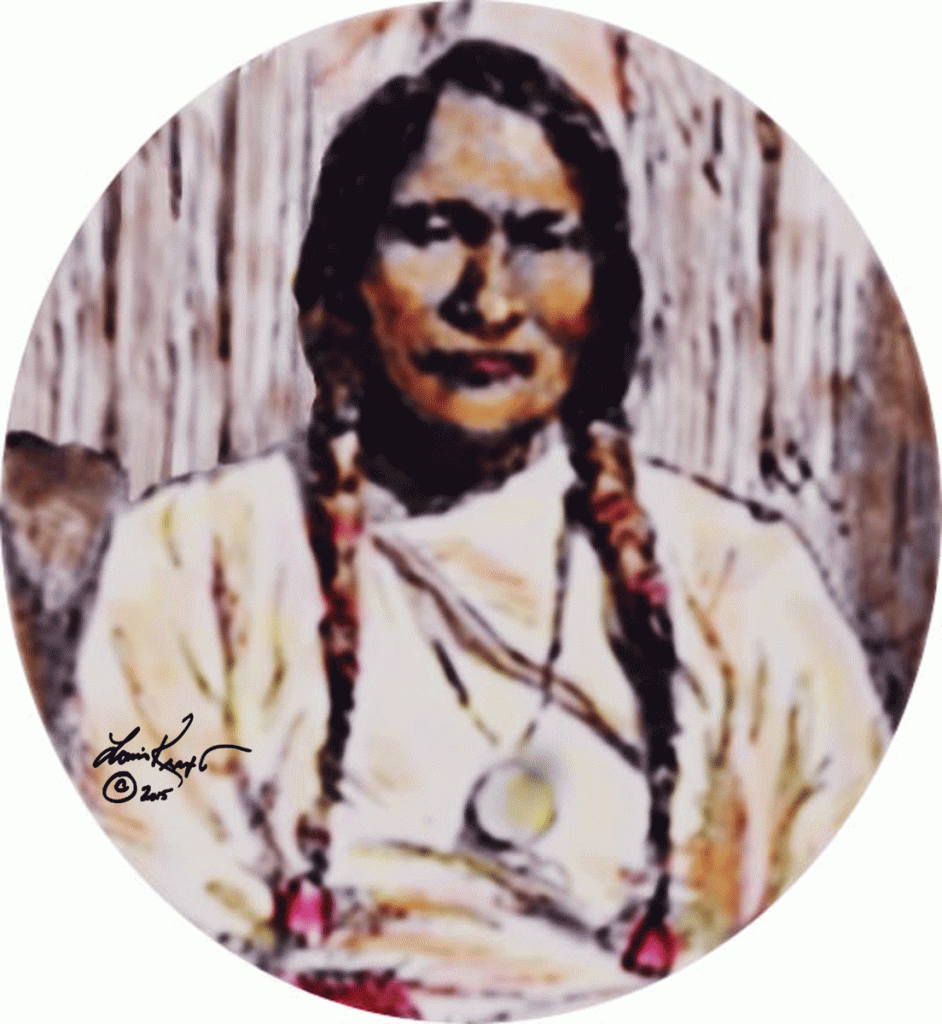
This is Black Kettle, and for the record I constantly attempt to create portraits of him; this image will not appear in Sand Creek and the Tragic End of a Lifeway (and you can take this to the bank). … It looks like Black Kettle, Little Raven, John Chivington, John Evans, William Byers, Ned Wynkoop, William Bent, William Bent, and George Bent are my leading players. Left Hand is also but no images of him exist (my loss). There are other Cheyenne and Arapaho players who could become leading players such as Bull Bear and Tall Bull (and I hope that they can; alas, no images exist of Tall Bull). … Back to Black Kettle. Folks, he was not an elderly fellow that dropped out of the most important time of his life or his people’s lives. He was up front and center, and he had more guts and courage than any of the Cheyenne warriors that fought the overwhelming might of the United States. His life was always at risk, by both his own people and the invading whites. (art © Louis Kraft 2015)
However, when I do find a jewel I’m right into the manuscript and adding the information. The other day I found pure gold on Cheyenne Chief Black Kettle that I had no idea existed. Honestly, this is what I’m looking for as Black Kettle is one of the leading players in the Sand Creek manuscript and I’m desperately trying to find events that happened in his life to fill in the gaps. This is directly related to my view that actions define who people are and not what someone says about them.
Again, I’m thrilled. … But the purpose of this post is threefold: Bitch, which I’ve done; praise, which I’ve done; and alert Indian wars writers to wake up to a massive archive in SoCal that will reopen in a blink of an eye (hopefully 2017, but this is questionable) that there is material available that can be added to your manuscripts in ways you wouldn’t believe. If you are a historian doing Plains or Southwest Indian research wake up and add validity to your writing. … The former Braun Research Library (at the former Southwest Museum) along with the former Autry National Center library and archives will provide you with a research center that will blow you away (American Indian research and including the Indian wars).
I’ve again been harsh, and believe me I have been pounded in the past by companies that I write for that I’m an ingrate that bites the hand that feeds him. True? Probably. … Know that I care about everything that I do. This means that I can’t take prisoners, that I must fight for the best product possible at all times and that includes receiving requested documentation when promised and not being forced to complain again and again until I receive a comment that I’m unclear in what is owed me. I have deadlines and I can’t afford to miss too many of them or I won’t be hirable.
For the record
“There’s gold in them ‘thar’ hills!” I have no clue if this is a real quote of not. And, by God, I have struck it! Mining the Cheyennes at the Braun Research Library in June 2014 has already proved worth every hour I put in, every complaint I had to make to receive requested documentation, and every dollar that it has cost me (and it wasn’t cheap).
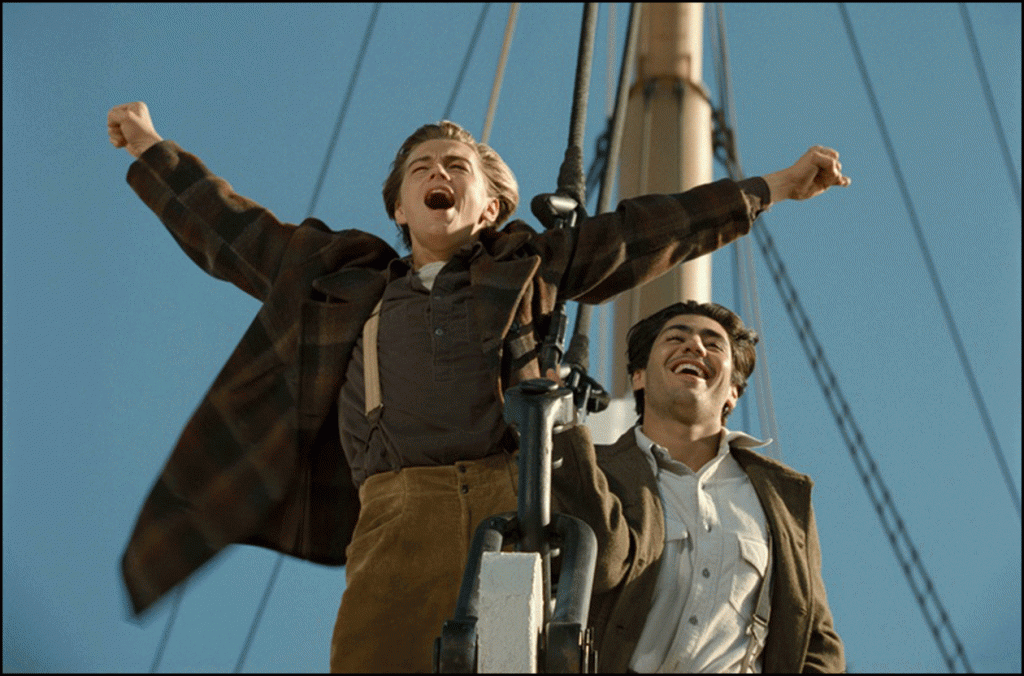
This image is from 1997’s Titanic. Here Leonardo DiCaprio (as Jack Lawson) proclaims at the beam of the mighty vessel on its maiden voyage: “I’m king of the world!” Danny Nucci (as Fabrizio, Dawson’s friend), joins him. When this film was released it was storied to become the largest financial disaster in film history. Instead it became the largest grossing film worldwide ever (to that point in time). Almost everyone I knew loved the film, which went on to win a ton of awards including the Oscar for best film. Many of these people have since dismissed the film. … For the record I have two film lists: a top 13 Errol Flynn films (and The Adventures of Robin Hood isn’t on the list) and a top 60 films which does not include Flynn films. For what it’s worth, my top 60 films list (which isn’t close to being completed) is not based upon the Academy of Motion Pictures Arts and Sciences’ Oscar for best picture, director, actor, actress, script, and so on. Perhaps Kevin Costner’s magnificent Dances with Wolves (1990) should be on my list but it isn’t, and never will be. I believe that Costner’s Open Range (2003) with Bob Duvall and Annette Bening is a much better film, and it has a chance of making my top 60 films list. … Even though I work on “The Song Remembers When” blog whenever I have free time there is a chance that a short blog, like this one, can sneak in. And I’m going to announce it here: “Errol Flynn & Louis Kraft, the connection and a view” will be my next blog. Be warned that it will include prose that might anger you, hopefully enlighten you, but certainly will be based upon a long-time film knowledge combined with a deep-seated gut-feeling that is present whenever I view film. For what it is worth I study film four to five times a week as it a great way to understand how dialogue; plot; script; editing; direction; cinematography; film scores, which is my favorite type of music; and good production values influence every word that I write for print (and that includes these blogs).
At the moment my every waking hour is dominated by one thought: Kraft, when are you working on the Sand Creek and the Tragic End of a Lifeway manuscript? The short answer is daily. Research takes time; comprehension takes more time. Once both connect, my fingers pound the keyboard. At those times, and to again quote Leonardo DiCaprio in Titanic, “I’m king of the world!”



